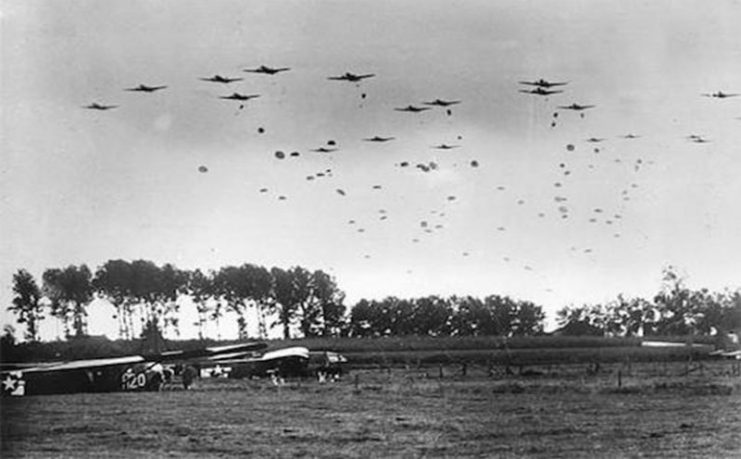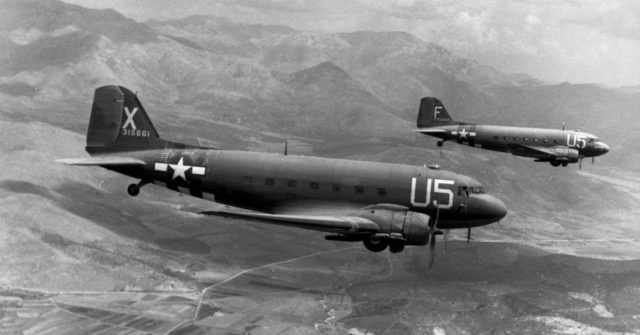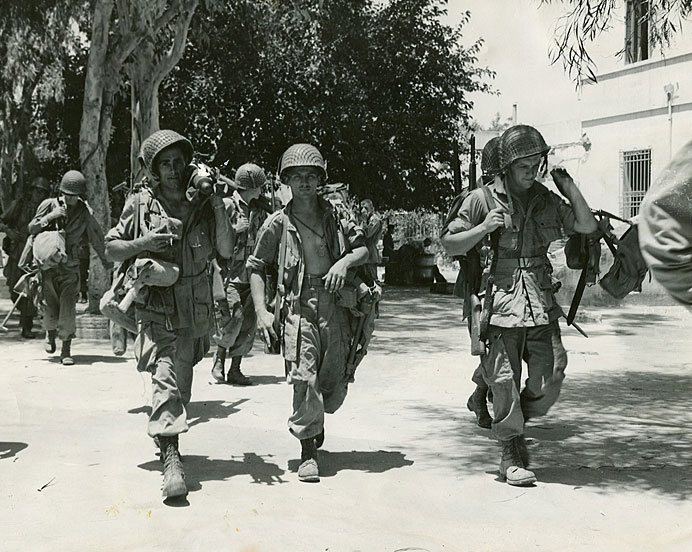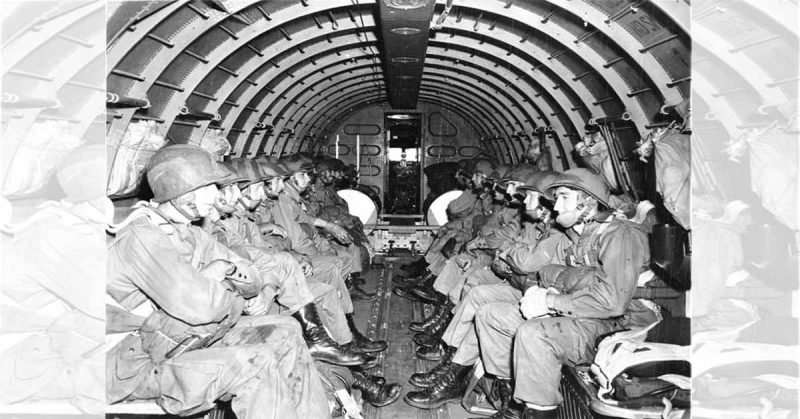March 29th event will honor all WW II veterans and heroes of the 505th Parachute Infantry Regiment (505th PIR), 82nd Airborne Division
On Thursday, March 29th, 2018, at 1430 hours (2:30 p.m.) everyone from around the region, state and nation is invited to attend the 75th Anniversary Memorial Ceremony recognizing one of the most significant training operations in U. S. Army history.
According to Kershaw County Council Chairman Julian (JB) Burns, MG USA RETD, the anniversary of this historical event will be celebrated at the Memorial Monument on the grounds at INVISTA at 643 US Highway 1 in Lugoff.
“The ‘First Mass Parachute Drop’ was conducted by the U.S. Army right here in Kershaw County,” said Burns. “And we will gather to honor this illustrious military feat that was so brilliantly executed by the 505th Parachute Infantry Regiment, 82nd Airborne Division 75 years ago. This Proof of Concept ultimately led to the mass landings at Normandy and victory in World War II. Kershaw County is proud to have played a role in the history of the famous 82 Airborne Division.”
Presiding over the memorial service will be Brig. Gen. Chris LaNeve, 82nd Airborne Division commanding general for operations, Fort Bragg. Special entertainment will include the 82nd Airborne Division’s All-American Chorus.

The 75th Anniversary ceremony is being organized by The American Legion, Post 17; WWII C-47 Club 82d Abn Div., The Veterans of Foreign Wars (VFW), Post 5928; and The Marine Corps League, Detachment 1147. Ceremony MC is Major Theodore Podewil, USA (R), who says there will be a variety of speakers and wreath laying ceremony honoring all those who participated including Troopers of the 505th, US Army Air Force (USAAF) personnel and those who lost their lives in the operation.
“In addition to recognizing all the World War II veterans attending the ceremony and all other veterans, we will feature a presentation by noted military historian and author Robert Anzuoni,” said Podewil.
The ceremony will take place Thursday, March 29 at 2:30 pm/1430 hours at the site of the 82d Airborne Division Monument in front of INVISTA at 643 Hwy. US 1 in Lugoff, SC. The ceremony is free and open to the public.

In a significant operation in Kershaw County March 29, 1943, the 505th Parachute Infantry Regiment from Fort Bragg made the first regimental mass parachute jump in U.S. Army history. The exercise was staged as an assault on the Wateree River bridgehead. Over 200-troop-carrying C-47 (Skytrain) Transport Planes carried rugged paratroopers to Battle, to the Lugoff are Drop Zone (DZ) located near the river crossing. A monument on U.S. Highway 1 explains that the success of this exercise “established the feasibility of and conduct of large scale parachute operations in World War II.” Only a little over three months later, the 505th made the first U.S. Army regimental combat jump July 9 in the invasion of Sicily, the beginning of a decisive role played by American airborne troops in World War II. Before the staged assault, the Division was reviewed at Pope Field, Ft. Bragg by British Foreign Secretary Anthony Eden, Sir John Greer Dill, Field Marshal, British Army, and Army Chief of Staff, General George C. Marshall.

Following is an excerpt from A History of Kershaw County, South Carolina (by Joan A. Inabinet and L. Glen Inabinet) Chapter 16 (Wings of War), pages 495-96, and based on contemporary newspaper accounts.
Military Connections
Maneuvers before the war had introduced Kershaw County citizens to some aspects of military action. In spring and fall of 1942, Army maneuvers encompassing Kershaw County continued, smaller in scope but said to exceed the earlier ones in intensity since the participants expected soon to be in real battles. Maneuvers continued in the county throughout the war. Fewer weekend leaves were given, although the community continued to entertain off-duty soldiers.
At least one military exercise during mock fighting on the Wateree River gave the county a practical benefit. Officials were concerned that standing remains of the old Wateree Bridge would wash downriver in a freshet and damage the new bridge just south of it. As demolition practice, military divers attached explosives to the piers of the old bridge and safely brought down its remnants. Some flattened concrete remains can still be viewed at the river’s edge north of the present bridge.
In a significant operation in Kershaw County March 29, 1943, the 505th Parachute Infantry Regiment from Fort Bragg made the first regimental mass parachute jump in U.S. Army history. The exercise was staged as an assault on the Wateree River bridgehead. Troop-carrying gliders, flying engine-less on silent wings, flew along with roaring transport planes. In the Lugoff area of the major landing zone near the bridge, a monument on U.S. Highway 1 explains that the success of this exercise “established the feasibility of and conduct of large scale parachute operations in World War II.” Only a little over three months later, the 505th made the first U.S. Army regimental combat jump July 9 in the invasion of Sicily, the beginning of a decisive role played by American airborne troops in World War II.
The site of thousands of white silk parachutes dropping through the skies in three waves of a mock attack awed local observers. Several reported deaths were a sobering part of the maneuvers that overall included Camden, Kershaw, and Lancaster. There was interest though in the fact that the first paratrooper to make the jump at Lugoff was a Camden youth, Ivey K. Connell, whose relatives excitedly greeted him at the Wateree Bridge with a basket of sandwiches and soft drinks. A few months later Connell died in a combat jump in Italy.
